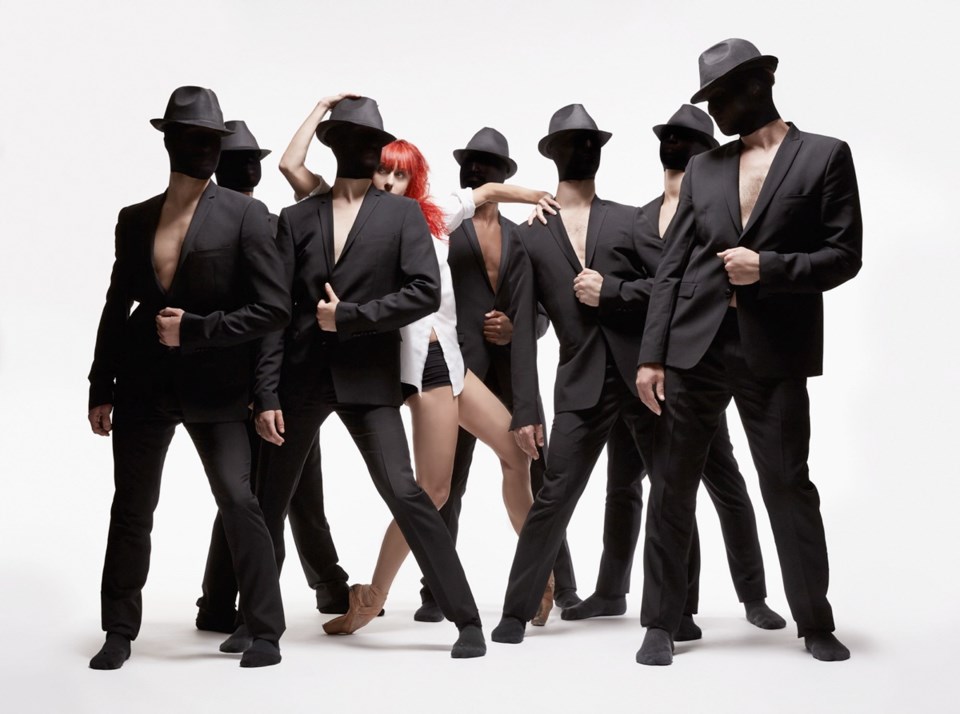Intriguing choices loom on the horizon as Victoria’s busy theatre season chugs forward.
The Victoria Operatic Society’s production of Jonathan Larson’s musical Rent continues at McPherson Playhouse. Inspired by Puccini’s opera La Bohème, the VOS production, which continues to Dec. 2, is directed by Doug Crockett, with musical direction by Brad L’Ecuyer and choreography by Bryony Blake.
On Tuesday, Theatre Inconnu opens Trad by Mark Doherty. The play, directed by Wendy Merk, is the story of a 130-plus-year-old man, Da, who joins his century-old son to find a missing offspring. One critic dubbed the play a “wonderful, humourous satire on Irish drama.” It continues to Dec. 15.
Those who missed Langham Court’s 2014 staging of Margaret Atwood’s The Penelopiad have another chance. The Canadian College of Performing Arts’ Company C remounts the play Nov. 28 to Dec. 1. Based on Atwood’s novella, the large-cast show is a sardonic retelling of the Odysseus myth from Penelope’s point of view.
Blue Bridge Repertory Theatre offers classic tunes from Christmas movies and musicals with Blue Bridge Sings Christmas! running Dec. 6 to 9.
There’s considerable buzz for the Belfry Theatre’s Griffin & Sabine, based on Nick Bantock’s beloved books detailing an imaginary correspondence. The new show — created by Bantock and Belfry artistic director Michael Shamata — runs Dec. 4 to 23.
No doubt dance lovers are already looking ahead to Dance Victoria’s next production, The Nutcracker, opening Friday with the Royal Winnipeg Ballet and the Victoria Symphony.
The company recently hosted a dance creation also destined to be a perennial crowd pleaser. This was Les Ballets Jazz de Montréal’s Dance Me, a splashy tribute to the songs of the great Leonard Cohen, who died in 2016 at the age of 82. The 80-minute series of pieces for 14 dancers (which premièred a year ago in Montreal) earned cheers and a standing ovation following BJM’s Nov. 16 performance at the Royal Theatre.
If any company has the right to use Cohen’s songs, it’s Les Ballets Jazz, given that the troubadour, poet and novelist was one of Montreal’s most famous sons. Cohen lovers — who adore the singer-songwriter with a fervour bordering on the religious — will no doubt love the show. Others will find sparkles of brilliance amid other sections that seem somewhat disconnected from the music.
First, the good things. Led by artistic director Louis Robitaille, Les Ballets Jazz de Montréal offers a superb standard of dance. The level of technical virtuosity was often breath-taking, particularly that of principal dancer Céline Cassone, who performed with a thrilling precision and passion. One suspects BJM could be dancing to the songs of Milli Vanilli and it would be worth watching.
This is a slick, stylish show. There’s bold and often effective use of lights and video (although some might argue the imagery threatens to overshadow the dance in places). We saw black-and-white projections of giant dancers gently falling to Earth, songs that end in a puff of smoke, disembodied Rocky Horror Show-red lips that pout and pulsate. The dancers often don the costume Cohen favoured: a black suit and fedora.
Dance Me is the work of three internationally recognized choreographers: Andonis Foniadakis, Annabelle Lopez Ochoa and Ihsan Rustem. Certainly, rounding up such an acclaimed trio was a coup for BJM. At the same time, it’s possible having so many creators gave Dance Me a certain patchwork quality. The work is deliberately intended not to have a through narrative; however, the multiplicity of artistic view-points (and having 10-plus different dances) led to the lack of an overarching vision.
Some will argue otherwise — and there is certainly much to admire in Dance Me. The most powerful moments were found in intimate pas de deux rather than energetic ensemble sections. During the acoustic folk song Suzanne (“She feeds you tea and oranges that come all the way from China”) a female dancer was lifted upside down with her legs scissoring — a fleeting yet unforgettable image capturing the song’s sense of whimsy and romance.
At times, larger groupings of dancers, while moving with admirable technical facility, seemed oddly disconnected from the music and words. This was the case for First We Take Manhattan, a brooding synth-pop smack at fascism in which performers bounced like busy molecules, wielding silver staffs and posing to strobe lights at the end.
An ensemble offering that worked better was the opening number, Here It Is, with the geometrical placement of the bodies reflecting the formality and mystical solemnity of the song. It ended in darkness with three dancers holding their spot-lit right hands outstretched, pulsating their fists like human hearts.
Dance Me works more often than not. Certain aspects overly pander, such as the Rockettes-like line of legs in V formation for Tower of Song (this one features the red lips) or the over-reliance on fedora/typewriter iconography, which suggests Sam Spade and film noir as much as anything. The artistic approaches didn’t always fully plumb the depth of Cohen’s dark romantic vision; however, the dancing never failed to impress. This show is replete with difficult choreography — complicated lifts, spectacular leaps, complex contortions. BJM managed it all with wonderful style, grace and aplomb.



